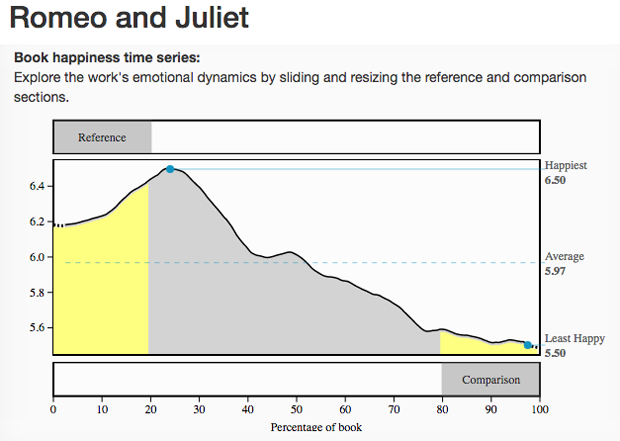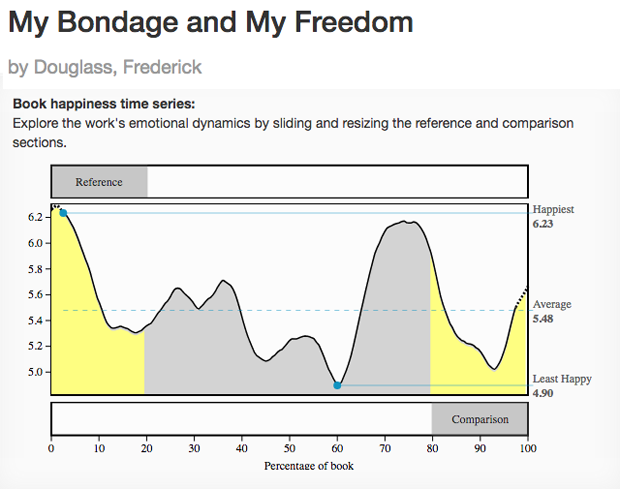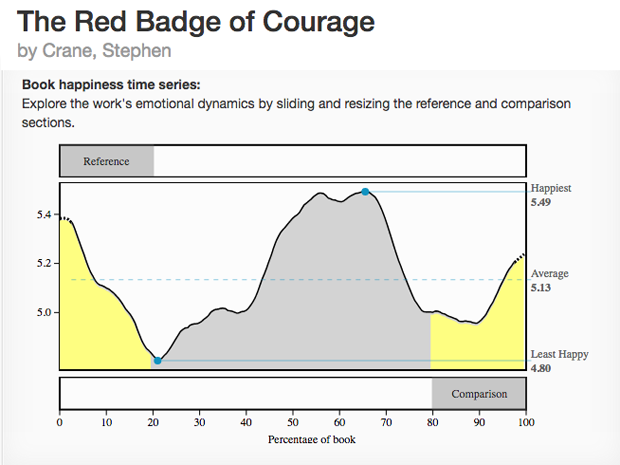
The story shape of “Romeo and Juliet”
Some stories and novels earn the criticism of “formulaic,” but perhaps every tale is based on a simple formula.
So say researchers at the Computational Story Lab at the University of Vermont in Burlington. They used sentiment analysis to find the basic emotional arcs of more than 1,700 novels. The six most common shapes:
- A steady, ongoing rise in emotional valence, as in a rags-to-riches story such as “Alice’s Adventures Under Ground” by Lewis Carroll.
- A steady ongoing fall in emotional valence, as in a tragedy such as “Romeo and Juliet.”
- A fall then a rise, such as the “man falls into hole, man gets out of hole” story, discussed by Kurt Vonnegut in a classroom lecture.
- A rise then a fall, such as the Greek myth of Icarus.
- Rise-fall-rise, such as Cinderella.
- Fall-rise-fall, such as Oedipus.
Curious readers and writers and storytellers can see the shapes for themselves at the Hedonometer.

The story shapes of “My Bondage and My Freedom”
and “The Red Badge of Courage”

As we shape our own stories to connect with others, we don’t have to reinvent the wheel. Nor must we despair that every story worth telling has already been told.
We should simply keep in mind that the best stories pull people in because they have ups and downs. They magnify the emotions that shape everyone’s lives, whether it’s a gut punch of sudden sorrow or an onset of unexpected joy.
As marketers, as bloggers, as social media practitioners, we owe it to our audience to craft these stories with real feeling.






